Somewhere in the world a butterfly flaps its wings and the course of history is changed forever. At least, that’s how the saying goes. But on a local level, butterflies play a vital role in the strength of the ecosystem, and promoting the health of their population can, in fact, change the course of our gardens.
By far the most popular butterfly local to Martha’s Vineyard — at least in recognition — is the monarch. Its tawny orange wings with black veins, folding and unfolding gracefully as it rests atop a bright fall bloom, never fail to draw the attention of onlookers. In recent years there has been wide concern in the media that the population has been in decline, and this might be true.
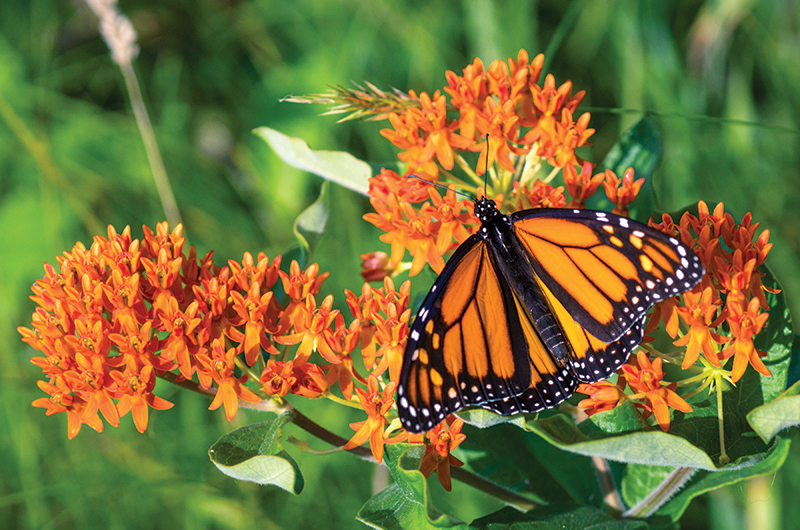
Local wildlife expert Matt Pelikan, who has spent 22 years collecting field notes on the butterfly population of the Island, and tracking their interactions with different plants and animals, describes them as the “charismatic megafauna” of the butterfly world, no more important than any other species of butterfly. “They are the ones people know about,” he said, “largely because they are brightly colored and obvious. But they are no more important than any other species.” There are many different types of butterflies on Martha’s Vineyard. There are hairstreaks, elfins, duskywings and many more. Some are common and some are rare. For example, there is a thriving population of gray hairstreak on the Island. While Leonard’s skipper, a small and fuzzy butterfly with brown wings, has a local population that has crashed in the last 20 years, according to Matt.
Of the 80 butterflies that are known on Martha’s Vineyard, each one performs its own specialized, unique task that contributes to the health of local ecosystems. Each pollinates different types of flowers which in turn aids in the development of different neighboring plants and vegetables. Diversity, Matt said, is the most important feature in the vigor of any garden. And butterflies — many different types of butterflies (including the painted lady below) — are vital in promoting the diversity of a garden.
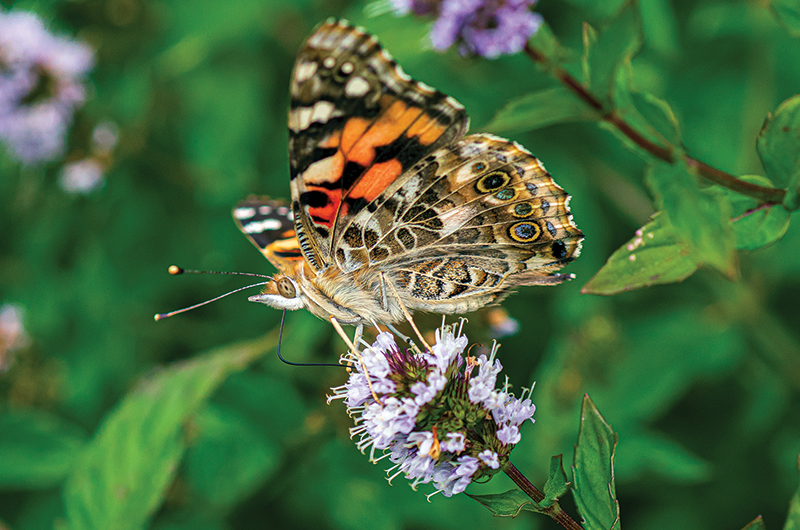
“What you want is plant diversity because that is where the insect diversity will come from,” he said. “Having a healthy population of pollinators that are pollinating everything else in the natural world makes your garden a useful part of the [wider] ecosystem.”
Luckily, there are steps you can take to ensure that your garden can be a home to a wide variety of local butterflies.
Native butterflies are attracted to native plants for both eating and breeding. The first thing to do, and possibly the most important, is to plant flowers that are native to the Island. This includes, but is not limited to, milkweeds, blueberries, goldenrods, asters, queen anne’s lace, coreopsis and echinacea. (Polly Hill Arboretum’s plantfinder, plantfinder.pollyhillarboretum.org, has a list of 243 native Island species. Not all of these are flowering plants that attract butterflies, but it’s a good place to start learning about native species.)
These plants are all good sources of nectar that will attract different types of butterflies, who will then spread pollen, making your garden more fertile. The plants will also provide a nesting ground for chrysalises in the future planting season.
Matt also said that it’s important to include native flowers that offer a variety of bloom times throughout the growing season to attract different types of butterflies that happen to be in a specific area at a specific time. Butterfly bush (Buddleia) attracts many species, including the tiger swallowtail pictured below on a butterfly bush bloom.
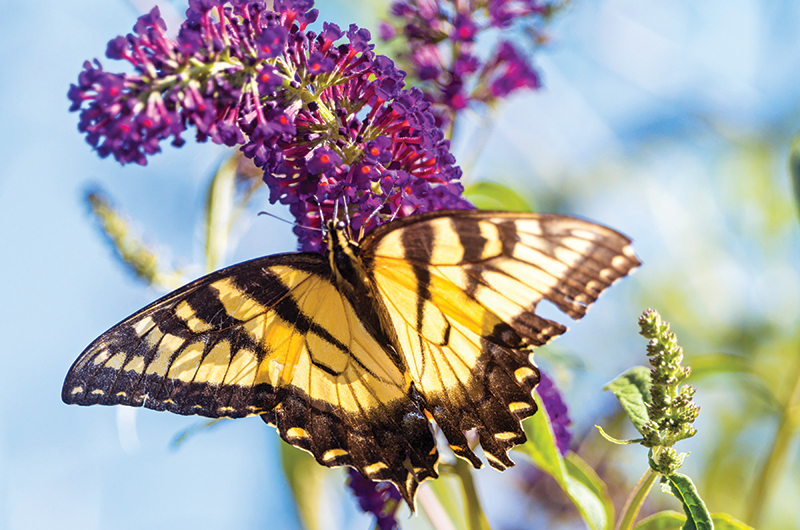
At the other end of the spectrum, there are some plants that don’t do a good job of attracting and feeding butterflies. Those plants are ones with showy flowers that are heavily doubled with convoluted petals. Many of these plants aren’t native to Martha’s Vineyard, are low on nectar and do not cross-pollinate well with native plants. (That doesn’t mean you can’t have showy flowers in your garden — just that you’ll want to have plenty of native plants in the mix.)
It’s also important to remember that many butterflies are permanent residents of the Island. Matt estimated that only 10 to 15 percent are migratory, flying in the general direction of south for the winter. For this reason, he said that it’s vital to leave leaf litter in place for the winter, because a lot of butterflies rely on the debris for overwintering in one life stage or another.
The final thing to be aware of is minimizing the use of insecticides, which kill a variety of insects that are important for the diversity of a garden — including butterflies and caterpillars. Matt said that there are very few types of butterflies that are harmful to plants, as they only have a straw for a mouth and can’t chew. The damage done is usually from a select number of caterpillars which tend to only infiltrate cabbage beds. Instead of using fertilizer, it would be easier to isolate a cabbage patch (or a patch of any vegetable in the cabbage family, like kale and collards) in a separate part of the garden.
The advice Matt offers on how to use butterflies to promote a healthy and diverse garden can be boiled down to one simple theme: the more natural, the better. “Butterflies are wild animals and have evolved to live under natural conditions. Why would they want to hang out around a highly artificial environment?” he said. “They would prefer a native habitat that has the native fruit plants that they have adapted to, the ones that have places for them to shelter, or hide out for the winter. The best thing we can do is help provide those natural conditions for them.”
Matt acknowledged that the trend towards having a more natural garden has been building slowly for a number of years. But he said that there is still a lot of industrial landscaping on the Vineyard, with lawns that are overwatered and fed insecticides.
“Keep your garden good and messy,” he concluded. “Plant a lot of native plants and plant with a lot of diversity in mind. That is the best way you can integrate your garden into the ecosystem.”
Will Sennott is a reporter for the Vineyard Gazette
Lower three butterfly photos by Tim Johnson.

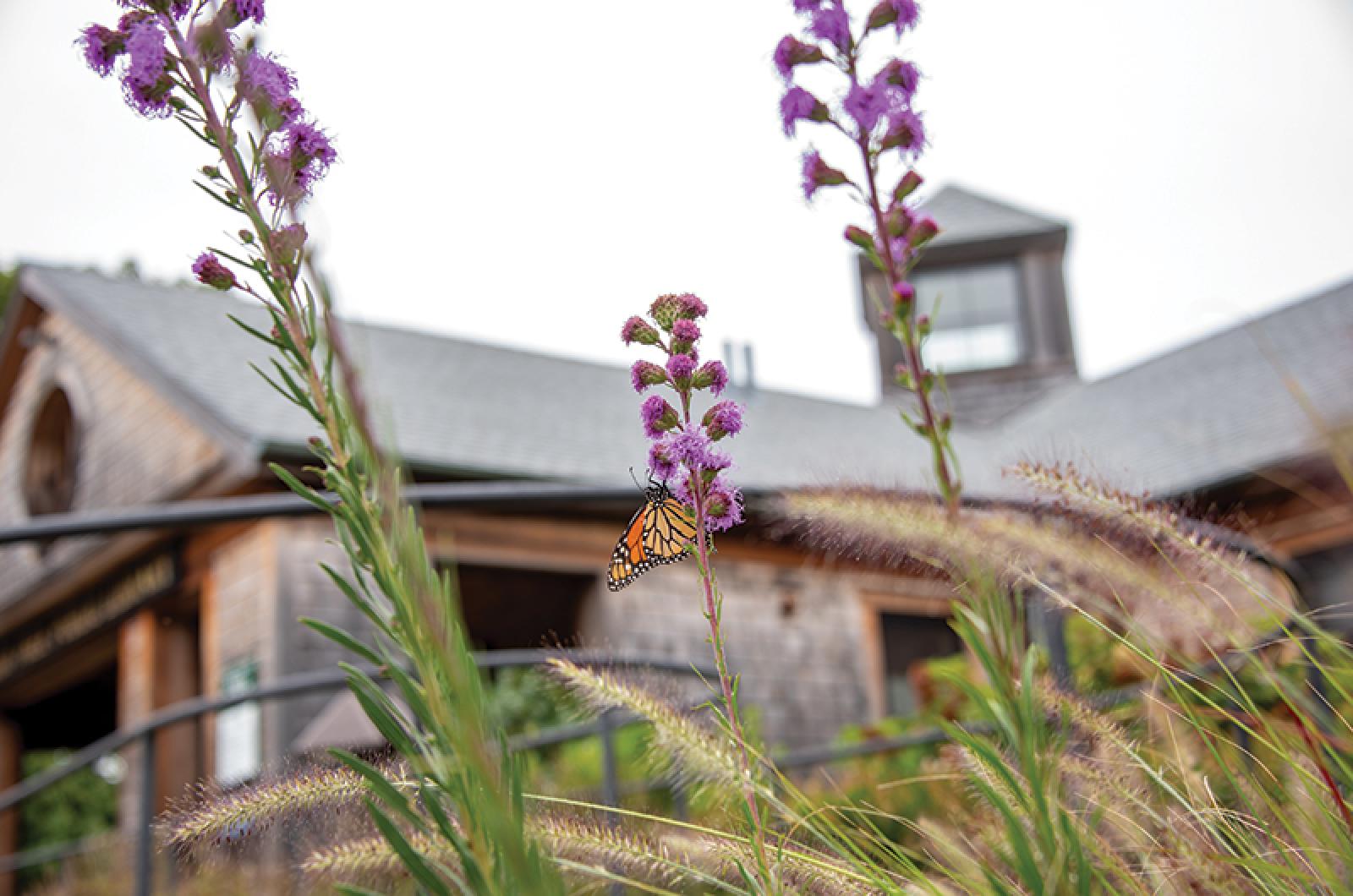



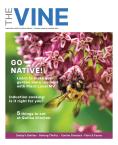





Comments